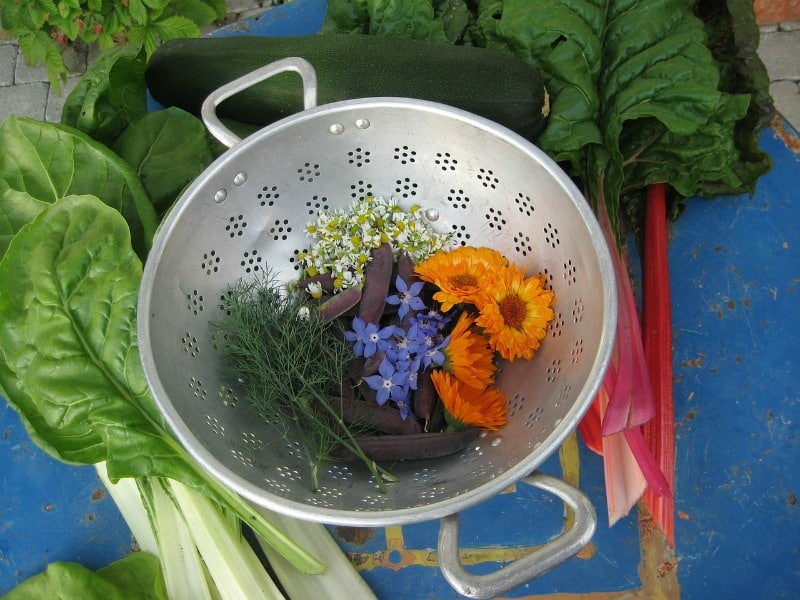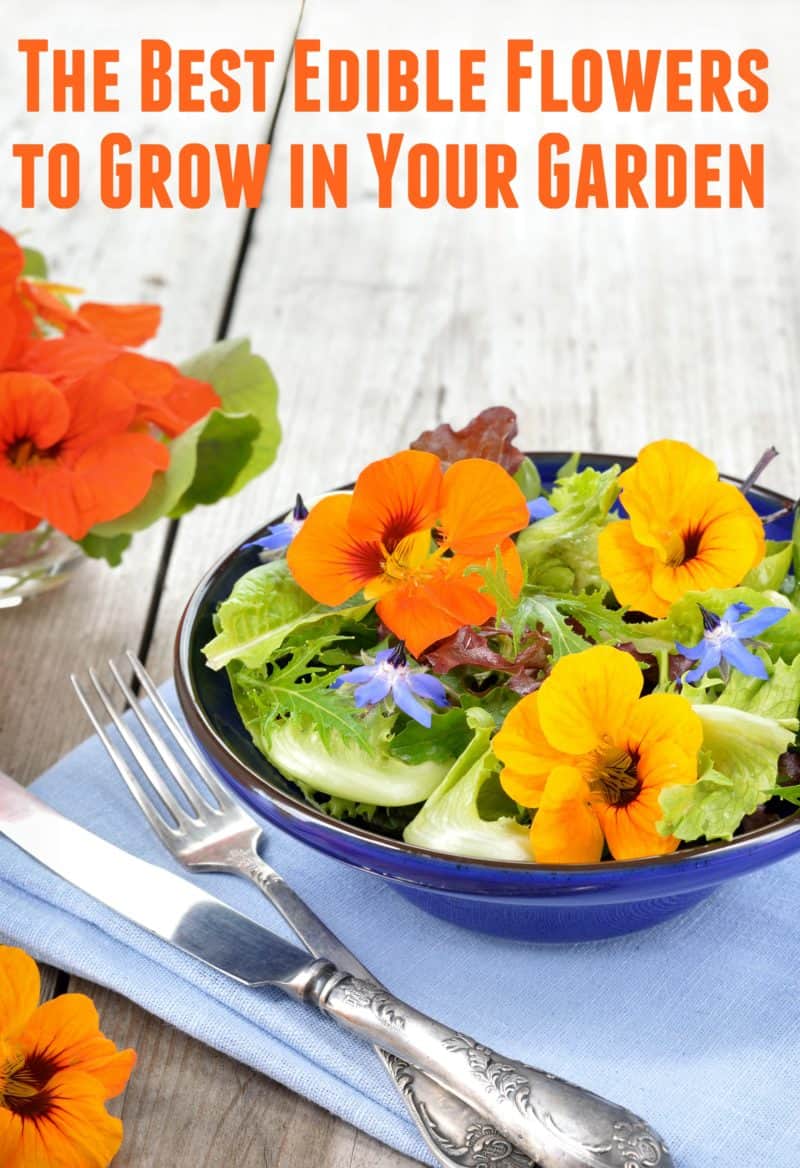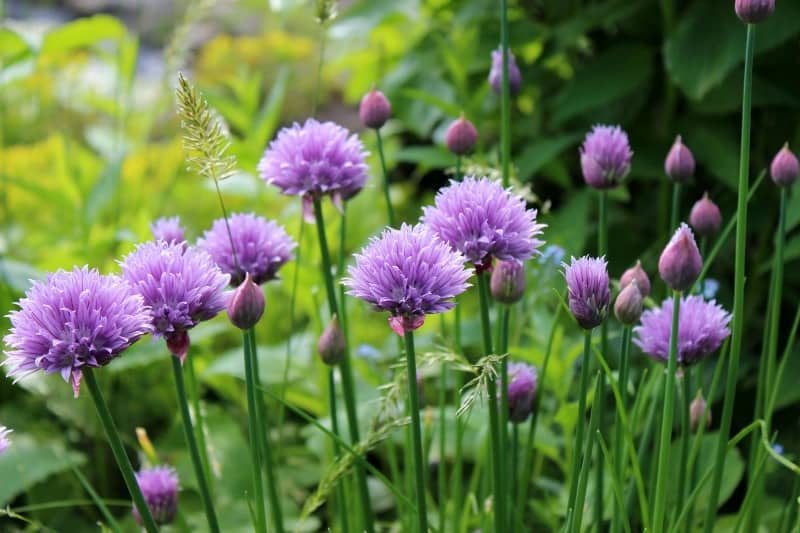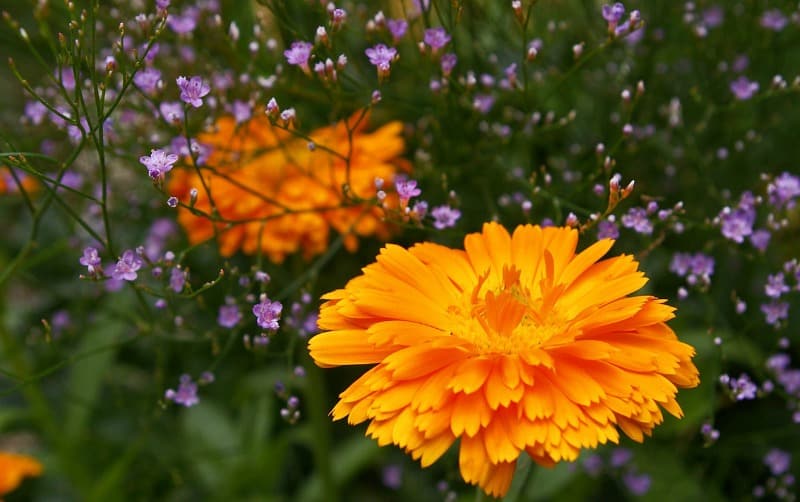Last Updated on December 2, 2022 by Ellen Christian
What are the best edible flowers to add to your vegetable garden? One a blog trip I went on a few years ago, the salad I enjoyed was topped with gorgeous edible flowers.
Posts may be sponsored. This post contains affiliate links, which means I will make a commission at no extra cost to you should you click through and make a purchase. As an Amazon Associate I earn from qualifying purchases.
The Best Edible Flowers
While I’d heard of eating flowers before, at that point I had never tried it, and I wasn’t quite sure how to get started. It was so pretty that I almost didn’t want to disturb it, but eventually, I tried a few petals, and I was hooked. Now, I try to grow a few edible flowers in with our vegetables every year.
Of course, not every flower is edible, and not every part of every flower is edible. In some cases, you should eat the leaves. In others the petals, and in others, the roots or bulbs. It’s very important that you know what you’re growing and what part you should and should not be eating. When in doubt, don’t eat it.
Tips for picking the best edible flowers
Here are a few tips when you’re getting started.
Avoid the road
Never pick flowers that are close to the road. They are probably covered with car exhaust or chemicals from the road. You don’t want to eat that.

No garden chemicals
Choose flowers from your own yard that have not been sprayed with garden chemicals. Your neighbor’s pansies may be gorgeous, but if they spray garden chemicals on them, you don’t want them in your salad.
Leave some behind
Never pick them all. If you want the flowers to return each year for you to enjoy, you should never pick them all. Granted, annuals will only come up once so it’s not as much of an issue.
But, if the flower is perennial or biennial, be certain not to take them all.

Enjoy them raw
Most edible flowers are best eaten raw. Just pick them and rinse them off under cool water. Are lilac flowers edible?
Which flowers can you eat?
Here are a few of the best edible flowers to grow in my opinion. Make sure that you consult a flower book for pictures of edible flowers and be sure you know what you’re eating.
If you have enough sunlight in your home, you may want to try growing edible flowers indoors so you can enjoy them all year.
Chives
Chives are members of the allium family like leeks and garlic. Traditional chives will have purple flowers on top. Garlic chives will have white flowers on top.
Both the flower and the stem are edible. The flowers set seed so that the chives can expand each year. I try to never pick more than half of what’s growing in my garden so that each year I have more than the last.
Nasturtiums
Nasturtiums have a slightly peppery taste and are wonderful scattered on top of a garden salad. You can eat both the blossoms and the leaves. These are an easy-to-grow annual so they are perfect for beginners. Why not try stuffed nasturtium leaves.
Marigolds
Marigolds are one of the most common edible flowers grown in people’s gardens. Planted around the edges of your garden, they can keep garden pests away because they don’t like the taste.
Don’t let them fool you, though, they really are quite good. Marigolds are annuals and will need to be planted each year. This is a great choice to grow in a window box.
Pansies and Johnny Jump Ups
Pansies are one of the first flowers I add to my garden because they are slightly cold tolerant. When we have a mild winter, there are even a few that will come back each year although technically they are an annual.
Pansies and Johnny Jump Ups have a slightly wintergreen taste. If you’ve seen pictures of edible purple flowers for cakes, they were probably pansies.
Bee Balm or Monarda
I adore bee balm. We used to have a huge patch that would come up each summer with gorgeous dark red flowers. You can eat the flowers and make a tea from the leaves.

Squash blossoms
You probably already have these in your garden, but you may not be eating them. Your summer squash will have beautiful yellow blossoms on them that are edible.
You can eat them raw if you like, but they are also quite good in stir fries. I have also heard of people who batter dip them and then fry.

Daylilies
Daylilies are very prolific in my neighborhood and we have several patches of them all over the yard. You can eat the buds and flowers that have a taste that reminds me a bit of asparagus.
Which of these do you think are the best edible flowers to grow?
If you’d like more gardening inspiration, take a minute to visit DIY Idea Center for National Gardening Month. And, be sure to sign up for their updates.
Related Reading

Ellen is a busy mom of a 24-year-old son and 29-year-old daughter. She owns six blogs and is addicted to social media. She believes that it doesn’t have to be difficult to lead a healthy life. She shares simple healthy living tips to show busy women how to lead fulfilling lives. If you’d like to work together, email info@confessionsofanover-workedmom.com to chat.




I hadn’t thought about edible flowers but used to grow daylilies and didn’t know I could have harvested and eaten them! Next, you should do a post on eating insects! I won some cricket flour and cricket chocolate bars (from Chapul) and am anxious to see what they taste like when they arrive! It’s supposed to be good protein so I’m keeping an open mind, lol.
LOL no way. I cannot stand bugs. You are on your own with that one!
Oh wow! Great post. I have some squash blossoms out there right now. I think I will go pluck them off right now!
Sounds perfect, Janice!
I love the idea of growing edible flowers. We have been gardening a lot more this year I need to add some of these to our planting list.
I’m really looking forward to more as the weather warms up!
This is great, I had no idea that there were edible flowers that you could grow. I Love the idea of growing flowers that are edible.
They’re beautiful and delicious!
I have heard of edible flowers, but have never really tried eating them. Your salad looks amazing! I think the easiest edible flower to grow would be the flowers from chives and squash blossoms. I’ve seen those in plenty of gardens.
I really do enjoy adding them to my salads.